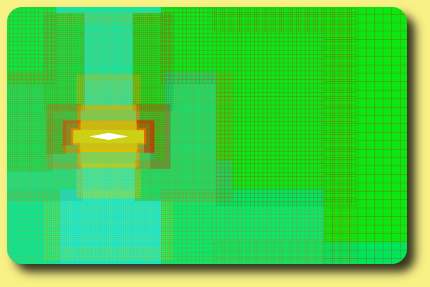
Initial mesh (snear=0.0058). 47 grids, 84 000 cells.
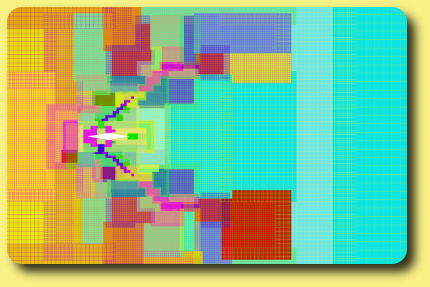
Mesh after 5 adaptations (snear=0.0029). 169 grids, 234 000 cells.
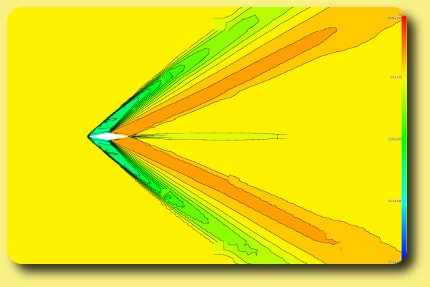
Initial Mach number field (snear=0.0058). 47 grids, 84 000 cells.
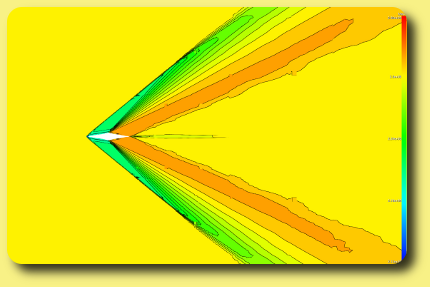
Mach number after 5 adaptations (snear=0.0029). 169 grids, 234 000 cells.
Sensor field
The sensor field, which is the difference of the Mach number here to capture the shocks, is displayed
at the end of the first and fifth computations:
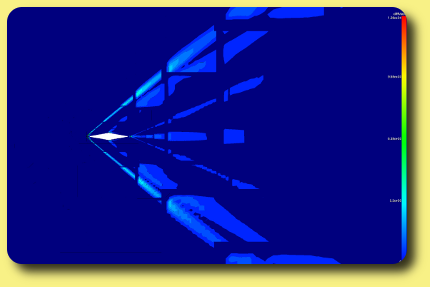
Initial sensor field (snear=0.0058). 47 grids, 84 000 cells.
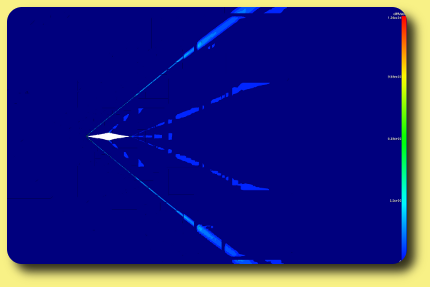
Sensor field after 5 adaptations (snear=0.0029). 169 grids, 234 000 cells.